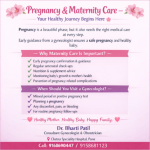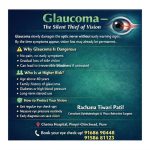Introduction: Discogenic low back pain is a prevalent and often debilitating condition that affects millions of people worldwide. Characterized by pain originating from the intervertebral discs of the lumbar spine, discogenic low back pain can significantly impair daily activities and quality of life. In this comprehensive guide, we will delve into the causes, symptoms, diagnosis, and treatment options for discogenic low back pain, offering insights and solutions to those grappling with this challenging condition.
Anatomy and Physiology of the Intervertebral Discs– To comprehend discogenic low back pain fully, it’s essential to understand the structure and function of the intervertebral discs. These discs serve as cushions between the vertebrae, absorbing shock and facilitating spinal flexibility. Composed of a tough outer layer called the annulus fibrosus and a gel-like inner core known as the nucleus pulposus, intervertebral discs provide both stability and mobility to the spine.
Causes and Risk Factors– Several factors can contribute to the development of discogenic low back pain. Degenerative changes associated with aging, such as disc degeneration, loss of disc height, and decreased disc hydration, are common culprits. Additionally, traumatic injuries, repetitive stress, poor posture, obesity, and genetic predisposition can increase the risk of discogenic low back pain. Understanding these underlying causes is crucial for effective management and prevention strategies.
Symptoms and Clinical Presentation- Discogenic low back pain typically manifests as localized discomfort in the lumbar region, often exacerbated by movements such as bending, lifting, or twisting. Patients may experience stiffness, aching, or sharp pain that radiates into the buttocks or legs, mimicking symptoms of sciatica. The intensity and duration of symptoms can vary, ranging from intermittent discomfort to chronic, debilitating pain that interferes with daily activities and sleep.
Diagnosis and Differential Diagnosis– Accurate diagnosis is essential for distinguishing discogenic low back pain from other spinal conditions with similar presentations. A comprehensive medical history, physical examination, and imaging studies such as X-rays, MRI, or CT scans are commonly employed to evaluate the spine’s structural integrity and identify any abnormalities. Differential diagnosis may include conditions like lumbar disc herniation, spinal stenosis, facet joint syndrome, or sacroiliac joint dysfunction.
Treatment Options -Management of discogenic low back pain typically involves a multimodal approach tailored to the individual’s specific needs and preferences. Conservative treatments such as physical therapy, chiropractic care, acupuncture, and nonsteroidal anti-inflammatory drugs (NSAIDs) are often recommended as initial interventions to alleviate symptoms and improve function. In cases where conservative measures fail to provide adequate relief, more invasive options such as epidural steroid injections, radiofrequency ablation, or spinal decompression surgery may be considered.
Emerging Therapies and Innovations– Advancements in medical technology and research continue to expand the treatment landscape for discogenic low back pain. Regenerative medicine approaches utilizing platelet-rich plasma (PRP), mesenchymal stem cells (MSCs), or growth factors hold promise for promoting tissue repair and regeneration within the intervertebral discs. Additionally, minimally invasive procedures like endoscopic discectomy and spinal fusion techniques offer alternatives to traditional open surgery, with reduced risks and faster recovery times.
Lifestyle Modifications and Prevention Strategies– Incorporating healthy lifestyle habits and ergonomic practices can play a pivotal role in preventing or minimizing the risk of discogenic low back pain. Maintaining a balanced diet, engaging in regular exercise, practicing proper lifting techniques, and optimizing workstation ergonomics can help alleviate stress on the spine and reduce the likelihood of disc-related issues. Smoking cessation and weight management are also essential factors in promoting spinal health and preventing degenerative changes.
#pune #pcmc #chinchwad #hospital #medical #medicalservices #spinesurgeon #backspecialist #sciatica #sciaticnerve #sciaticapain #sciaticatreatment #spinesurgery #spinespecialist #spinedoctor #backpaindoctor #endoscopicspinesurgery #orthopaedicsurgeon #mistlifsurgery #cervicalpain #spinalcord #rediculopathy #backpainrelief #slippeddisc #spine #neckpain #spinalstenosis #lumberlordosis #backbonesurgery













